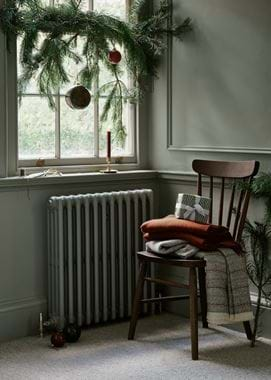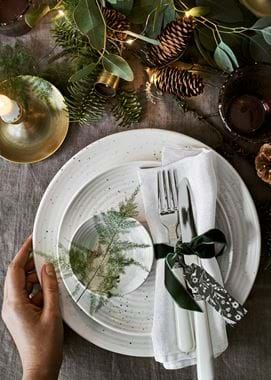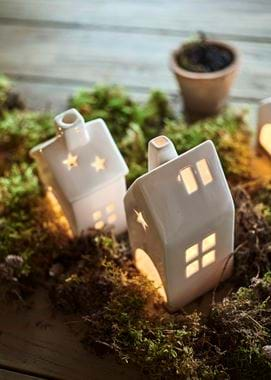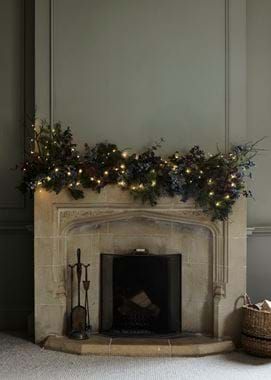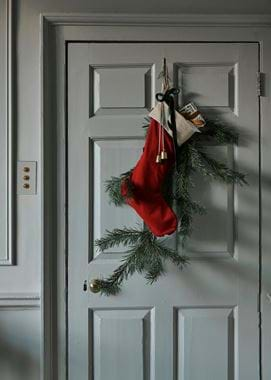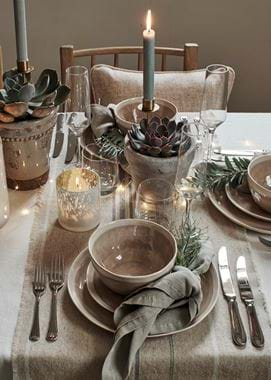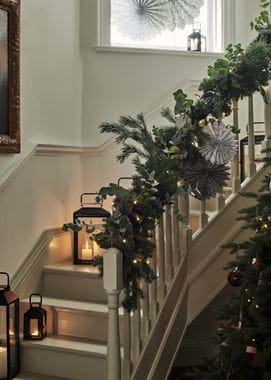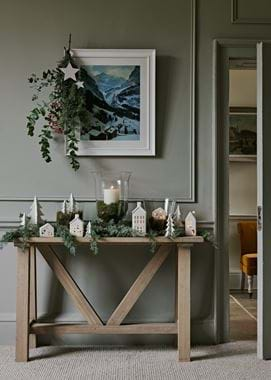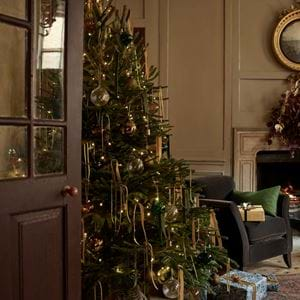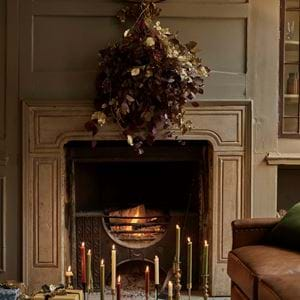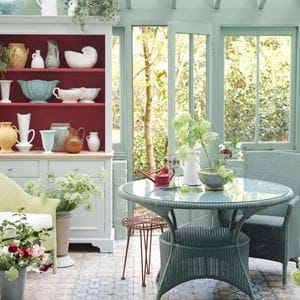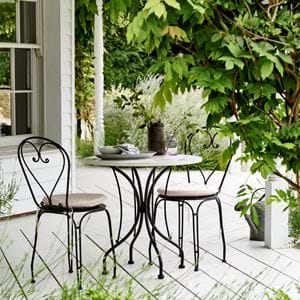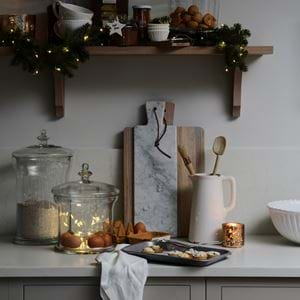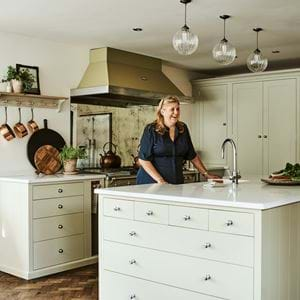How to decorate with winter greenery in your home
How to decorate with winter greenery in your home
From foliage to seed heads, berries to blooms, plants provide us with some of the best seasonal decorations for our homes. Whether you shape them into wreaths and garlands, gather them in vases or plant them in pots, they add life to your rooms, can be inexpensive (and very often free) and are, of course, kind on the planet when you’re gathering from close to home. Unlike baubles, they’re also very much not just for Christmas, and can perk up your home in the weeks after. So, with all that in mind, we’ve gathered together here a quick guide to what’s in season now and shared some of our favourite decorating ideas using plants, as well as touching on when real plants are perfect and when you might actually want to use life-like instead.
What’s in season?
There are all the usual suspects of course – holly, ivy, yew, pine and fir – which are easy to find in many gardens, hedgerows and woodlands (if you’re taking from the wild, make sure to forage responsibly. You can find a short guide to the dos and don’ts here, but it’s largely common sense, like not pulling up whole plants), but there’s lots more out there besides. For something a little more unusual – and less specifically Christmassy – look out for dried seed heads like teasels and old man’s beard, ferns, whether still green or dried, and interesting twigs and fallen branches such as beech (which very often holds onto its papery, russet leaves) and ash (which keeps its winged seeds – ash keys – throughout winter).
In the garden, there can be lots to choose from. It pays to plan ahead and choose plants specifically to give you winter interest both inside and out, but you might already have more to pick from than you think. Favourites include dogwood, hazel, daphne, quince and winter varieties of clematis, cherry, jasmine and honeysuckle, all of which can provide interesting, large-scale decorations in vases or as garlands. Then there are flowers such as hellebores, violas, snowdrops, heather, hardy cyclamen and dried hydrangea heads. Those in the warmest, most southerly parts of the country might even have early daffodils (which you can also, of course, force – more on that later). While in the kitchen garden, there are evergreen herbs like rosemary and bay to pick from.
How can I decorate with plants at Christmas?
This side of Christmas, you’ll be thinking most about wreaths, garlands and table decorations (although there’s absolutely no reason why those can’t be carried through to January and beyond too).
If you’re making a wreath using real foliage, avoid floral foam which isn’t necessarily the best eco option. Instead, create your base by securing damp moss to a wire frame using floristry wire which you can continue to mist while your wreath is up to keep the rest of the foliage fresh. You could also invest in a twiggy wreath like our Hollington (or make one using bendy twigs of willow or silver birch) and then weave through seasonal foliage that doesn’t need to be in water. Evergreens like holly and ivy, berry stems such as rosehips and, of course, dried plants will all be fine for a time. If your wreath is a one year only affair, then pop it outside come twelfth night so birds can forage from it for food or nesting materials.
As for garlands, sometimes simple is very often the best. Choose just one plant – ideally with both foliage and berry interest, such as yew, holly or berried ivy, or else a couple to give you both – and use masses of it. Generally, garlands look best when they’re full and generous.
Then, when it comes to table decorations, one of our very favourite looks is to use potted plants. Place plants in their plastic pots into decorative indoors pots, or plant them straight into bowls and glasses temporarily, finishing both with moss around the base of the plant. In either case, you can then transplant them into a more permanent pot or the ground outside once you’ve finished using them as table decoration. All the smaller plants we mentioned earlier would work well – ferns, heathers, hellebores, cyclamen – as well as forced bulbs such as snowdrops and delicate narcissi (find out more about forcing here. You’re a bit late to do it yourself for Christmas now, but could still get ahead for later in winter, and you can also buy forced bulbs ready potted). Other easy tabletop ideas include small posies of delicate snowdrops or berried twigs in tumblers, and a sprig of rosemary tied to each napkin with ribbon.
Around your dining table, don’t forget your chairs either. Simply gather a bundle of foliage and hanging decorations, then tie them all together by the stems using ribbon, leaving enough trailing to tie around the back of the chair. This will only work with wooden chairs of course, but you could also do the same on doors instead of wreaths.
If you’re looking to add something a little more unusual into your decorating this Christmas, turn both to kitchen garden plants and the contents of your larder. We mentioned rosemary and bay earlier, but chillies (either on the plants or snipped off), pomegranates, cranberries and limes all also make interesting additions to wreaths, garlands and tabletop displays. Dried citrus is a classic too, of course, but consider the red varieties of oranges and grapefruits instead, which will turn a subtle ruby colour when dried.
How about during the rest of winter?
After Christmas, as we head into January and on until spring, there’s a real sense of wanting to embrace both the freshness and verve of the new year and the stark beauty of winter. So, opt more for greenery than red berries or gold accents – ferns and pines will be just the thing. Snowdrops, hellebores and narcissi all continue to have a place in your home too of course, while architectural, bare branches will speak to that crisp, sharply defined side of winter – look out for emerging catkins and the very earliest of blossoms to hint at the emerging life that’s just around the corner.
When should I use real and when life-like?
Needless to say, we’re a bit biased towards life-like foliage and flowers, but we’d also never be without real plants. Both have their place.
We’d usually go for real when we want to use potted plants as decoration because they can live on again in your garden. As opposed to cut flowers, they’ll give you weeks of interest year after year, rather than just days. We’ll also use real plants where we can source them easily and responsibly for free, be that from our own gardens or the countryside, and we also love branches that naturally have a good shape.
On the other hand, life-like really comes into its own when you can’t easily find a certain plant or it would have to be imported – foliage like eucalyptus, for instance, that isn’t often found in the UK, or out of season blooms such as white roses that are a lovely addition to winter bouquets. They’re also great when you’d rather leave the real thing for wildlife to enjoy (like with seed heads and berries where there aren’t many around) or for yourself in the garden. If you only have a handful of hellebores in your borders, you won’t want to cut them and bring them inside. And finally, where life-like is also incredibly useful is in arrangements where you can’t easily provide water, like garlands and wreaths. All our stems are wired inside too, which means they’re wonderfully easy to manipulate and hold in place.
Each one of our stores has its very own flower shop – with blooms, berries, twigs and foliage for you to explore. You'll also find our festive wreath and garland designs in store for you to choose from.

